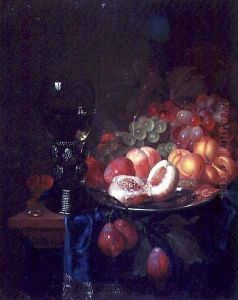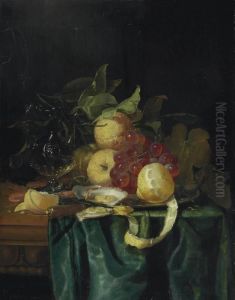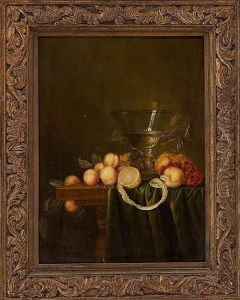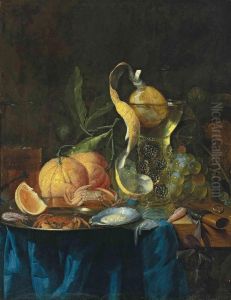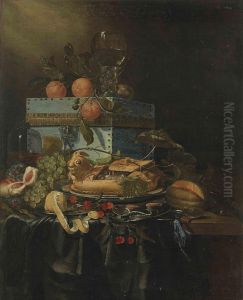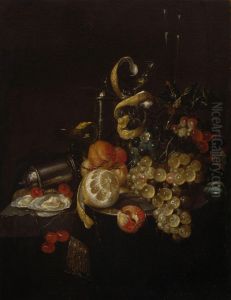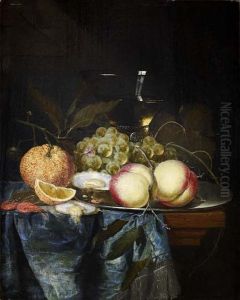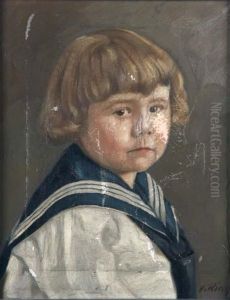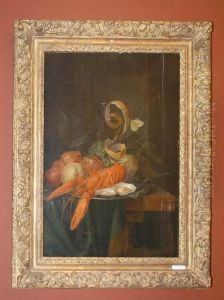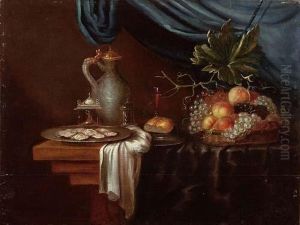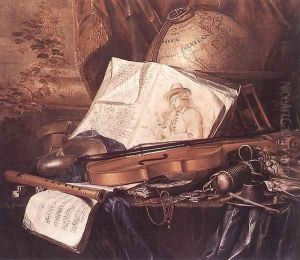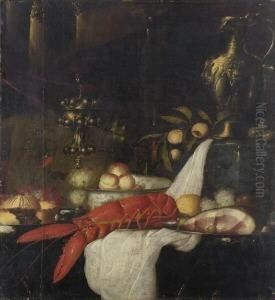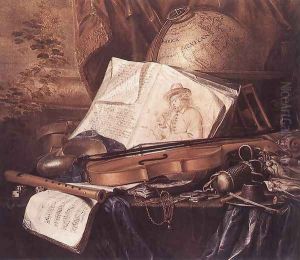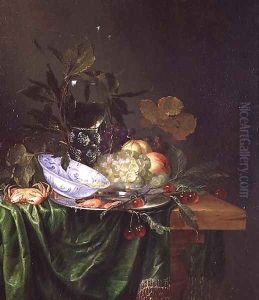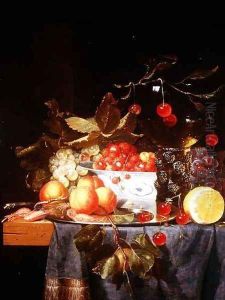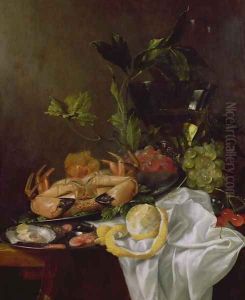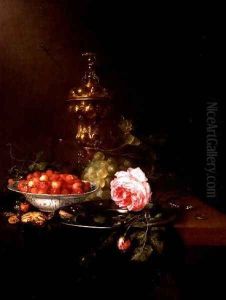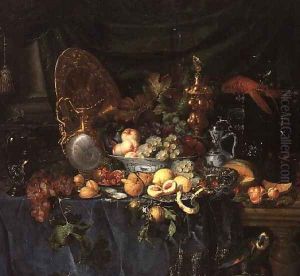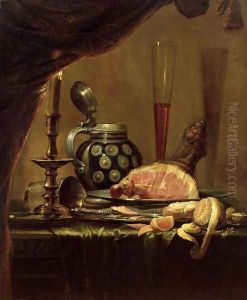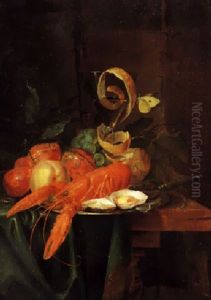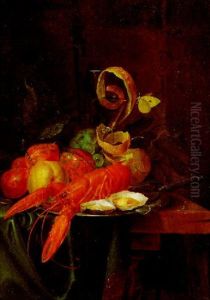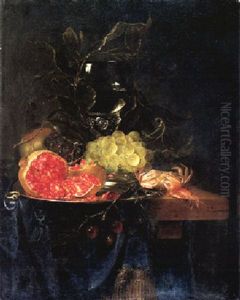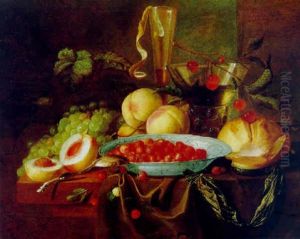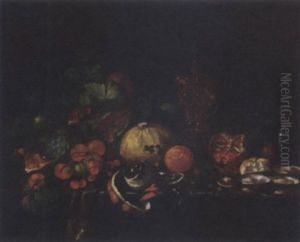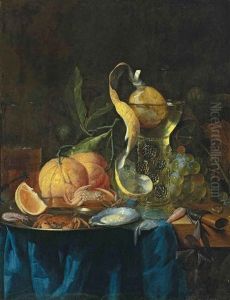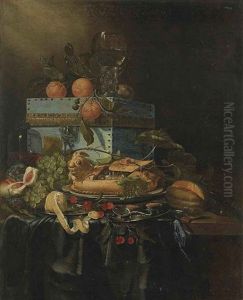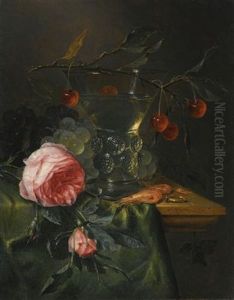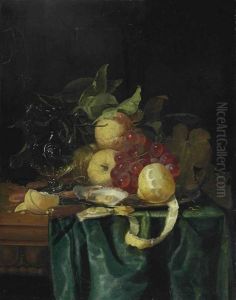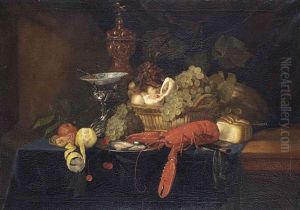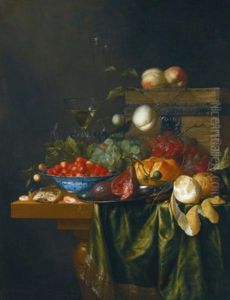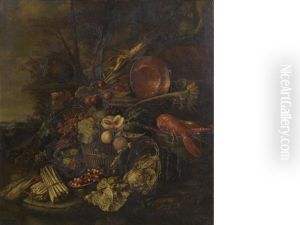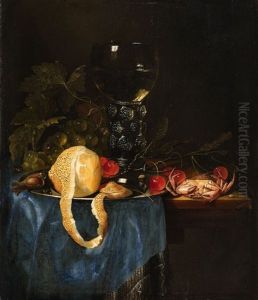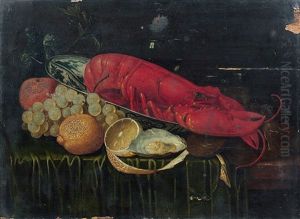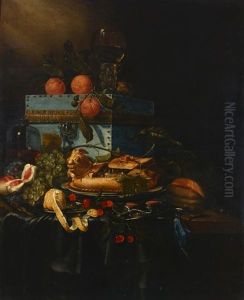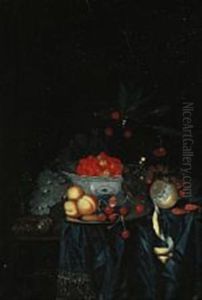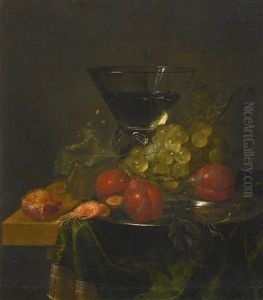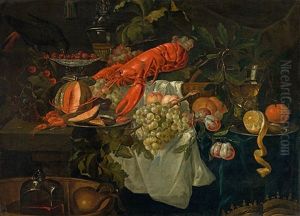Pieter de Ring Paintings
Pieter de Ring, a Dutch Golden Age painter, was known for his still life paintings, particularly those featuring sumptuous banquet tables with silverware, glassware, and richly detailed displays of fruits, nuts, and cheese. While the exact details of his life are somewhat obscure, he is believed to have been born between 1615 and 1620, possibly in Leiden, although there is also speculation that he could have been of Flemish origin.
De Ring was likely influenced by the works of other Dutch still life painters of the era, such as Pieter Claesz and Willem Claesz Heda, whose works were characterized by a similar attention to texture and light. De Ring's paintings often included a lemon peel, which became somewhat of a signature element in his compositions. This motif, along with the skillful rendering of reflective surfaces and translucent materials, helped establish his reputation as a master of the still life genre.
Unlike many of his contemporaries, de Ring did not date his paintings, making the chronology of his work difficult to establish. However, his paintings are distinguished by his initials 'PDR' intertwined with a ring, which is sometimes subtly incorporated into the composition of his works.
Pieter de Ring's paintings were highly valued during his lifetime, and he was presumably successful as an artist. He became a member of the Leiden Guild of St. Luke, an association of artists, in 1648. The exact year of his death is also uncertain, but it is generally accepted that he died in 1660. De Ring's work continues to be appreciated for its technical proficiency and its rich portrayal of texture and light in the tradition of Dutch Golden Age painting.
